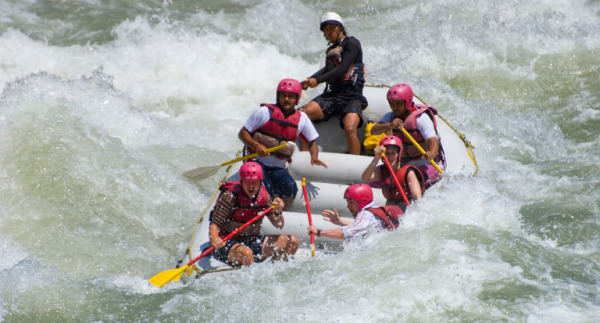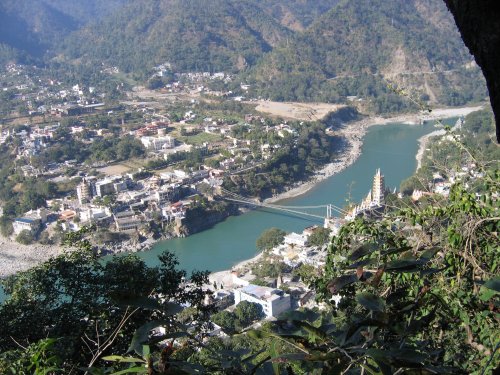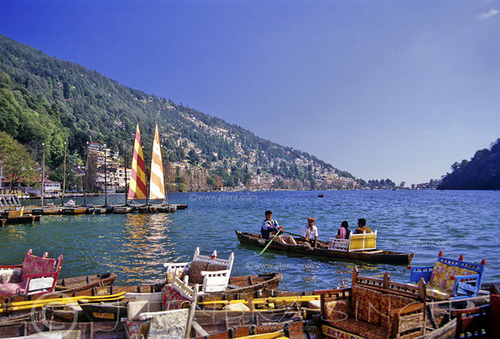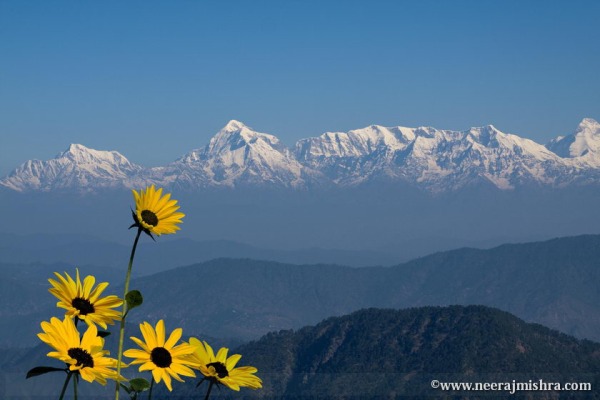A visitor to India, population 1.1 billion, is immediately struck by its overflowing jumble of humanity. After a few days in its congested and polluted cities, you long for the solitude of its open, sparsely-populated spaces.
There are a number of options to consider.
You can raft down the rapids of the Ganges River. You can visit two peaceful towns in the foothills of the Himalaya Mountains, Nainital and Rishikesh. Or you can join a safari in Corbett National Park.
The Ganges River, sacred to Hindus, is muddy and filthy in the table-flat plains of India. But high in the mountains of the picturesque Kumaon region, the river is clear and fast-flowing, lending itself to the thrills and occasional spills of whitewater rafting.
At the Mercury Adventure Village and Beach Camp, near Rishikesh, six of us, outfitted with orange life vests and black helmets, piled into a red and black rubber craft.

Before we set off on the 16-kilometer route downstream to Rishikesh, our Nepalese oarsman instructed us in basic rowing techniques. We learned two easy commands, forward and backward, so as to assist him in safely navigating the rapids.
Having conquered the grade four rapids of British Columbia’s turbulent Kicking Horse River, I confidently assumed that the Ganges’ grade two currents would be a pushover.
I was wrong.
As we thundered down the first rapid, rowing furiously, we were soaked to the skin by an implacable wall of cold water. Luckily, the day was warm and sunny.
For the next few minutes, we floated quietly and serenely, catching our breaths and summoning up our collective courage.
The second, third and fourth rapids were violent, tossing us around like bobbing corks. As we approached the final rapid, a long and churning descent, we switched left/right rowing positions. As we did so, the Nepalese oarsman momentarily lost control as we crashed into a monster current.
Jolted violently by the force of the waves, the raft tipped leftward, throwing three of us into the foaming water. I held on for dear life, having no desire to test the effectiveness of my life jacket or my lame swimming skills.
Jeff, a retired Australian teacher who had sat opposite me in the front of the raft, had been thrown overboard. He looked stricken as he struggled to keep his head above the water. Stephanie, our plucky tour leader from New Zealand, and Mary Ann, a lawyer from California, were sucked under the raft for several terrifying seconds. Acting with dispatch, the Nepalese oarsman pulled them in by grabbing the top of their vests.

The crisis having passed, we floated gently into Rishikish, a pleasant town of brightly-colored Hindu temples, tranquil ashrams, souvenir stores and herbal medicinal shops.
A few days later, we headed for Corbett National Park, which was established by Jim Corbett — the legendary British game hunter, writer and photographer — in 1936. Before reaching the reserve, we drove to Nainital, passing dusty, forgettable towns, sugar cane and wheat fields and herds of black water buffaloes.

Nainital, founded as a hill station during the British colonial era, is 1,00 metres above sea level and is India’s honeymoon capital. Hugging the shores of a small crater lake, Nainital is relatively cool in summer months. On crisp mornings, you can hear birds chirping, chickens squawking and church bells pealing. Like so many Indian towns, Nainital swarms with rickshaws, the pollution-free mode of transportation in India. If you’re hoping to travel further afield, however, India’s expansive railway network is the inevitable mode of transport for tourists and locals alike. When trying to see confirmation of your PNR status, you can enter your PNR number here to use a free online tool which allows you to see the current status of your ticketed journey.
There are no shortage of activities to pursue.
You can stroll up and down the main street, which is dotted with cafes, restaurants and shops. If you’re in a lazy mood, you can take a restful boat ride on the placid lake. And if you enjoy bracing scenery, you can hop on the cable car to the Snow View, higher up in the densely forested mountains.

The Snow View is spectacular, offering panoramic vistas of the perpeptually snow-clad Himalayas. Nanda Devi, India’s highest peak, dominates the forboding and majestic mountain range. China is to the far left, Tibet is somewhere in the middle and Nepal is on the extreme right.
Corbett National Park, 1,318 square kilometres in size, was established to save India’s endangered tigers. At one point, up to 20,000 tigers roamed the forests, but they were almost wiped out by rapacious hunters and poachers during the pre-1947 colonial period.

Regrettably, we never spotted a single tiger, the park’s chief attraction, but we did see langur monkeys, varieties of deer, wild boars, peacocks, crocodiles and elephants.
And, of course, Corbett National Park transported us far from India’s madding crowds.
